Why do Scientists say "So"?
From why scientists so often use the word "so" to the feasibility of charging a human by USB, how much Silly Putty it would it take to cover the entire Earth, and whether we could genetic engineer super-abilities into humans, we answer your burning science questions...
In this episode
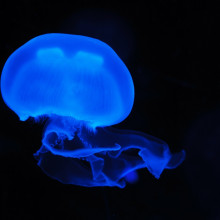
Could you mix human and animal genes?
We put this question to Kat Arney.
Kat - Technically, it's completely possible because DNA is just DNA. It doesn't matter where it's come from. In the lab, you can put jellyfish genes into mice, you can put human genes into bacteria, you can put worm genes into yeast. It's all DNA. It's all the same kind of nuts and bolts. If you put a gene in that's kind of got the right bits and bobs, it will be expressed. That means it will be active and it will make a protein because that's what genes do. They make little recipes that cells use to make different proteins. Now, that's what genes do. The difficulty comes when you say, if you put certain genes into different species, would it give that species some new power? So for example say, if you put an olfactory receptor, something involved in smelling from a dog into a human, would a human be able to suddenly smell all these different things? The answer is probably no because one gene doesn't just give a big characteristic like that. So, one gene is not responsible for super accurate sight or the smelling ability of dogs, or the hearing ability of foxes or something like that.
Chris - It can make a person glow with a glowing green jellyfish gene, couldn't you? That would be good.
Kat - That's the thing. So, you could do one thing that would be down to one particular protein or a couple of proteins. So, you could put in something that made someone glow under UV light, this green fluorescent protein from jellyfish, which would be so cool in a night clubs. Just like "hands in the air! My hands are green." For example, they do that already with the genes that make proteins involved in spider silk. You can actually make goats that produce the spider silk proteins. So, I think if you're talking about a whole system, a smelling system, an olfactory system, jumping system, that's going to be very, very difficult to engineer. It's the same thing with these new genome engineering technologies. We're hearing about things like CRISPR which has been in the news a lot. You can tweak certain genes and that can affect specific proteins or specific pathways in a cell, but to engineer an entire system is going to be, I think very difficult if not, impossible.
Chris - But given an ideal world then Ginny, what would you have in your organism? What super ability would you clone in?
Ginny - I think some of the kind of animal's super senses would be really cool, so to be able to echolocate or see infrared so that you could see kind of heat signatures and things. I think that would be pretty awesome. It would stop you bumping into things when you got up to go into the loo in the night.
Chris - Yeah. The visual one is a good one I'd say because that's relatively easy to do because that goes along with Kat's point that you can only really do this for one thing that one gene could do. So, you could add a gene into your retina that gave you a colour pigment that was capable of seeing other things that we can't currently see. So, you could do this for infrared or possibly other colours that you can't currently see and you could extend the spectrum of things you could see. Even UV, you could see UV like bumblebees do. That would be quite good.
Ginny - That would be great. What about navigation like the way birds use magnetic signals from the earth to navigate? That will be so useful. I'm always getting lost.
Chris - Well, researchers have actually found out recently how they do that. There's a paper that just come out in the journal eLife where researchers have found using worms actually that the worms are sensitive to the earth's magnetic field. They did a very simple experiment. They injected the worms into some jelly in a tube which was vertical. So, the worms go in one direction when they're hungry and they go in the other direction when they're well-fed. What they did was to then get some worms from Australia which having studied worms from Bristol in the UK and of course in Australia, the earth's magnetic field is pointing in the opposite direction. When they repeated the experiment, the worms do the opposite behaviour. They're going the opposite direction. So then they set up a system where they could reverse the magnetic field of the earth for the worms by just creating an artificial magnetic field and they could flip around what the worms did. They then looked in the worms and found these, they're special neurons, nerve cells inside the worms which appear to do this job. When you look at them, they're a really weird shape because one end of the nerve cell has got this strange, rod-like appendage on it that looks just like an antenna that you would put above your house to pick up TV pictures, and it's oriented along the length of the worm, and they think, well, perhaps with a bit of iron in there to make it wiggle with the earth's magnetic field it could be how the worms are doing the detection because they're clearly sensitive to magnetism. So, they really do have their own in-built compass. So Ewen, what would you clone in?
Ewen - One thing that really appealed to me is regeneration of digits. So, if you broke an arm or you broke it right off, you could just cut it off and let a new one grow back on again. Chris - Because there are animals that do that. Aren't there, Kat? They're very good at regeneration.
Kat - Yeah, things like flatworms, salamanders, all those kind of things. There's a lot of interest in trying to switch those genes back on because obviously, you start life as a baby growing in the womb. You have to be able to grow all these stuff. But for some reason, a lot of animals lose that ability. So, there is a lot of interest in being able to reactivate those developmental pathways.
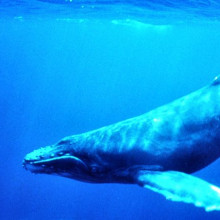
How do fish survive the pressure underwater?
Ginny Smith dived into Alan's question...
Ginny - Well, the first thing to say is that we ourselves are designed to withstand pressure. We have pressure pressing down us all the time from the air above us. And actually, you can see how great that pressure is if you've ever seen someone suck the air out of the inside of a can and it immediately crumples because the air pressure is strong enough to actually crush that can. The only reason it doesn't crush it most of the time is because that there's air inside it as well. Our bodies work the same way. There's air inside us and there's air around us and that kind of balances out. When you go down into the deep sea, there's a huge amount more pressure. In fact, the pressure increases about 1 atmosphere. So, that's one of the amount of pressure we have on us for every 10 meters, you go down in the sea. So, it could be that deep sea creatures have over a thousand times the pressure on them that we do. But they've evolved to live in that pressure. And one of the things they do is that they don't have air pockets inside them like we do. They use other things. So, their muscles for example have lots of water in them and water isn't compressible. You can't crush it. So, that kind of stops them from being squeezed too much. They have lots of different changes to their physiology. So, some of them have this molecule called a (PISA) light which actually prevents other molecules from being distorted when they're under pressure. We don't really understand how this works because one of the big challenges of studying these animals is like we couldn't survive down there, they actually can't survive up here when there isn't as much pressure. If you went down into the deep sea, picked up one of those fish and brought it back to the surface, by the time you got it here, it wouldn't look a lot like it looked when it was down there, and that makes them really difficult to study.
Chris - Ewen.
Ewen - Yeah, that's really good Ginny, but how then do whales manage to do it?
Ginny - I was waiting for someone to ask that. So, whales and animals that travel between lots of different pressures actually have the hardest job of all. They have lots of different adaptations that help them. One of them is that their lungs effectively collapse so that when they're diving down, those air-filled pockets basically just disappear so they're not there anymore and they can deal with that kind of physiologically in a way that we couldn't if our lungs collapsed. That would be really bad news. They also don't have some of the other air-filled cavities we have like sinuses.
Chris - They also have various behaviours, don't they? They surface more slowly so that rather than having compressed all this gas that was residual in their lungs down to a miniscule volume, and then effectively made it dissolve in their blood which is what happens when you put it under that pressure, if they were to surface really, really fast, they would get the bends. But they don't because they come up relatively slowly and this means that there's an opportunity for the gas to come back out of solution in the blood and go into the lung tissue. It does it at a slow enough rate that you don't get bubbles forming in the bloodstream. But if you scare a whale which can happen with underwater detonations and seismic surveys for oil and that kind of thing, that can make them rush to the surface and then they do get the bends, and people have found whale carcases where they've looked at the bones of these whales. Some of which are 100 plus years old and you can see what are called osteonecrotic lesions. This is where a bubble has formed in the blood vessel that supplies that patch of bone and the bubble has lodged in the blood vessel, blocking the supply and you therefore devitalise the bone downstream, and it dies and you get a hole in the bone. This is signs that whales can get the bends probably, in response to being a bit frightened.
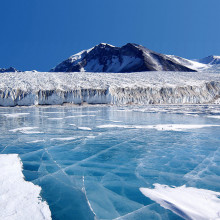
What happens when water freezes?
We put this question to Ewen Kellar.
Ewen - This is an interesting property of how gases interact with water because as water gets colder, it can dissolve more gas in it which is kind of the opposite to what you normally think when you're trying to dissolve sugar in water, where you've got to get warmer water to get more sugar in or more salt in. If we take a fizzy drink for example, where you've got carbon dioxide dissolved, when you actually have a litre bottle of such a drink, it actually contains about 6 grams of carbon dioxide which is about 3 litres if you were to let it out into the atmosphere.
Chris - That's about as many grams of sugar as there are dissolved in those fizzy drinks as well, isn't it?
Ewen - Yeah.
Chris - A slightly different concept, but...
Ewen - Yeah, absolutely. So basically, you can pack all that carbon dioxide into the water. Although, you generally need a bit of pressure to do it because that's why the carbon dioxide wants to keep coming out after when you undo the cap. But what happens is, when the water then starts to freeze, all the spaces, the cavities between the water molecules all start to disappear because the water molecules start orienting themselves, start to crystallise. And that basically starts kicking the gas out of the liquid and it generally starts to form tiny little gas bubbles and you'll see this in your ice tray. In a bottle of fizzy pop, if it's a plastic bottle, then there's no problem because what happens is, all that gas gets forced into that tiny little space at the top of drink. So, there's a very, very high pressure of gas sitting there when it's cold. But when it then warms up again, if you defrost your pop without taking the cap off then that will gradually all dissolve back in. However, beware don't try this with metal cans because the expansion of the drink will basically crackle in the side of the can and liquid will go absolutely everywhere and make an awful mess.
Chris - It would be a very strong alcoholic solution though, if it was a beer you did it with, wouldn't it?
Ewen - Yeah.
Chris - There'd be plenty of alcohol left behind because that wouldn't freeze, would it?
Ewen - Absolutely.
Ginny - I did that once by accident. I put some cans of coke in my fridge but then they got pushed right to the back of the fridge where it's really, really cold. I came back to the fridge a few days later and it was absolutely covered in sticky brown gunk and I reckon what happened is, because it was so cold, the coke can froze and burst.
Chris - You can get quite another interesting phenomenon with this - and we investigated this on the Naked Scientists a few years ago - which is that you can sometimes get a bottle of drink out of the fridge - especially if someone has been a bit over zealous with the thermostat and made the fridge a bit too cold - and it looks liquid. You pop the cap and it instantly starts to freeze and it does it from the neck downwards and then, before you know it, you're holding a completely frozen bottle of what was formally a fizzy drink. What happens, we think, when you do this is that you get the liquid being so-called 'super cooled', as in it's way below its own freezing temperature, but because you haven't disturbed it and the bottle is nice and shiny inside, there's nowhere for the first crystal of ice to begin to form. And then as soon as you pop the cap, you release some gas, some bubbles form at the surface and they act as a little disturbance in the shape of the liquid which gives you a crystal or the water touches the glass higher up and you then get a first crystal forming and then it starts to freeze all at once. It's pretty spooky because you go from having what you thought was going to be a nice cold beer to basically a bottle of ice, but there we are!
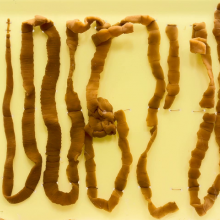
14:39 - Does de-worming boost school attendance?
Does de-worming boost school attendance?
Should we always trust a study with an easy solution? Scientists have found that it never hurts to check, as Kat Arney explains to Chris Smith...
Kat - What I've noticed this week has been a really, really fascinating study. 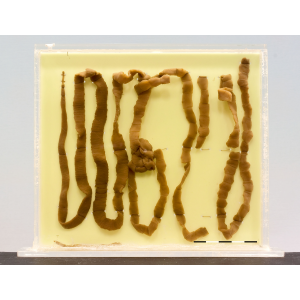 It hasn't actually been picked up that much but it's from researchers at the London School of Hygiene and Tropical Medicine. What they've done is reanalysed data from a study that was published over 10 years ago. Now, the study that was published 10 years ago, it was done in schools in Kenya which looked at the effects of giving deworming tablets to children and as well as the obvious health benefits you might expect - i.e. the children didn't have so many worms - they found in this original study that more and more of the kids went to school and that's presumably a good thing. Lots of development agencies saw this study and were like, "Yeah, this is brilliant! Deworming tablets, really cheap, give them out to kids, and they will go to school more." Everyone accepted that this was a brilliant idea. Now, the researchers from LSHTM, the researchers that have done this reanalysis, they looked at the data from that original study and they analysed it in exactly the same way as the original researchers had done, and they came up with different answers which is a bit dubious in the world of science when you take the same data and you crunch it in the same way.
It hasn't actually been picked up that much but it's from researchers at the London School of Hygiene and Tropical Medicine. What they've done is reanalysed data from a study that was published over 10 years ago. Now, the study that was published 10 years ago, it was done in schools in Kenya which looked at the effects of giving deworming tablets to children and as well as the obvious health benefits you might expect - i.e. the children didn't have so many worms - they found in this original study that more and more of the kids went to school and that's presumably a good thing. Lots of development agencies saw this study and were like, "Yeah, this is brilliant! Deworming tablets, really cheap, give them out to kids, and they will go to school more." Everyone accepted that this was a brilliant idea. Now, the researchers from LSHTM, the researchers that have done this reanalysis, they looked at the data from that original study and they analysed it in exactly the same way as the original researchers had done, and they came up with different answers which is a bit dubious in the world of science when you take the same data and you crunch it in the same way.
Chris - So, how did that happen then?
Kat - Well, they think that there may have been some errors in the original analysis, and then when they reanalysed it in a different way, then they found even more differences in the data. So, it looks like although deworming kids is clearly a good thing for children's health, it doesn't actually make them go to school more.
Chris - Because obviously, this is really important because if you are trying to persuade people what to invest their money in from a sort of funding and an overseas development point of view and you say, "Right. Look, the linchpin is education and we want as many people going to school as possible. You should spend your money on worm pills." Actually, that may be spending your money on the wrong thing to get the outcome you want.
Kat - Exactly. It's this wonderful idea that you can almost pop a pill for anything. "Give these kids pills and they'll go to school." In fact, I think it's probably shown that you need more complex interventions. Although it's interesting, the researchers I was talking to about this and they said it may just be that because there were researchers in the schools, you know, a person with a clipboard turns up, you're going to go to school because otherwise, you're worried that you might look bad if you don't. So, it's nothing to do with the worming. But it's certainly very interesting and it highlights that there's a lot of data produced in a lot of studies and many people accept the conclusions and don't necessarily go back and go, "Is this really telling us what we think it's telling us? Who's checking these studies? Who's reanalysing these studies?" there's actually more of a movement towards doing this. There's a lot of research done by thousands and thousands of scientists around the world. Some of it is good, some of it is not so good, some of it, maybe needs reproducing, some of it is pretty robust. I think this is how science works. It's not necessarily a flora of science that some things are found to not stand up. But I think that there should be more acceptance that people can try and reproduce studies, make sure that findings are reproducible. The trouble is that, in a world of science, we love novelty, we love the new stuff, the exciting stuff. Not necessarily someone going, "Yeah, I did those experiments again and I got the same answer."

Why do all scientists say so?
Ginny Smith tried not to say 'so' whilst answering this question!
Ginny - Well, it's something I've noticed myself doing as well. There are lots of different reasons that people might say 'so' at the beginning of a sentence. Probably the simplest is, it's an alternative to 'umm' that sounds a bit more like you know what you're talking about. It gives you a bit of time to kind of think of what you're going to say next but to sound like you know which direction you're going in. So, that's the kind of a simple answer. There are some more complex ones. So - there we go, I just did it. The way we use 'so' is to link two ideas together and normally therefore, the 'so' goes in the middle of a sentence. "I was hungry, so I ate some food." If you put the 'so' at the beginning of a sentence, it's suggesting that the idea you're going to say next is linked to something that's gone previously. So, one reason is that it might be the scientist trying to say, "I've listened to your question and I'm actually really concentrating on answering it. I'm trying to give you something that's linked to what you asked me." So, it's actually a way of kind of showing that you're empathising with the questioner and trying to give them the answer that they want.
Chris - So, do you know what I'm finding really aggravating - I don't know if you've noticed this as well - is people 'reaching out' to me. I've got about 50 million emails - and actually, I don't mean this in a disrespectful way, but they're all coming from America and these people write to me and they tell me they're 'reaching out' to me with this, that, or the other; they want to ask me to buy, sell or do something. I always write back- flippantly, joking of course - saying, "You must have very long arms because I'm several thousand miles away across the Atlantic." And they just don't get the joke. They don't see that everyone is doing this, but it's sort of similar, isn't it? It's trying to be empathic. It's trying to demonstrate a sort of openness and friendliness and it's actually coming across as a bit of nuisance.
Ginny - But it's also a habit. Humans pick up habits very quickly, very easily, and we like to fit in with our group. So, if other people in your group are doing something, you will automatically pick it up. And that's why once something starts being used, it often kind of spreads like wildfire. It's because we're tribal beings and we like to fit in.
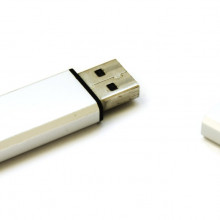
How long to charge a human by USB?
Chris Smith plugged in to answer this question...
Chris - Those 2000 Calories are "big" calories because an average person uses between 2000, 2500 Calories a day. So I thought this is quite interesting. With USB 3 you can draw up to 3 amps. Given that it's at 5 volts, that means that the rate of energy delivery from a USB is a maximum of 15 watts - in other words, 15 Joules per second. Now, one "big" Calorie - like is in food - that's equivalent to 4200 joules. If you want someone to consume 2000 big Calories in a day, which is your average, that's 2000 times 4200 joules. That's about 8 million joules. To work out how long it will take in seconds to get that much energy into someone with a USB port then you have to divide 8 million by 4200. So, that's about 53000. In other words, it takes you 6 days to get one day's worth of energy - equivalent to one day's food ration - into you. Probably not going to be a very sustainable means of nutrition unless we can up the wattage; a person runs at about 2 watts per kilo. So, on average, a 50 or 60-kilo person is running at about 100-watt. Therefore, we've got to find a way of delivering energy at that sort of rate. I think I'll stick to food. Food is nicer.
Ewen - Why don't you use more plugs, you could have several plugs to plug one person...?
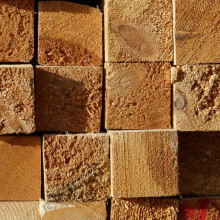
22:04 - World's largest modern wooden building
World's largest modern wooden building
A method of layering wood with glue solves many of the problems with building with wood, providing a light, low carbon option. Ewen Kellar told Chris Smith more about a new 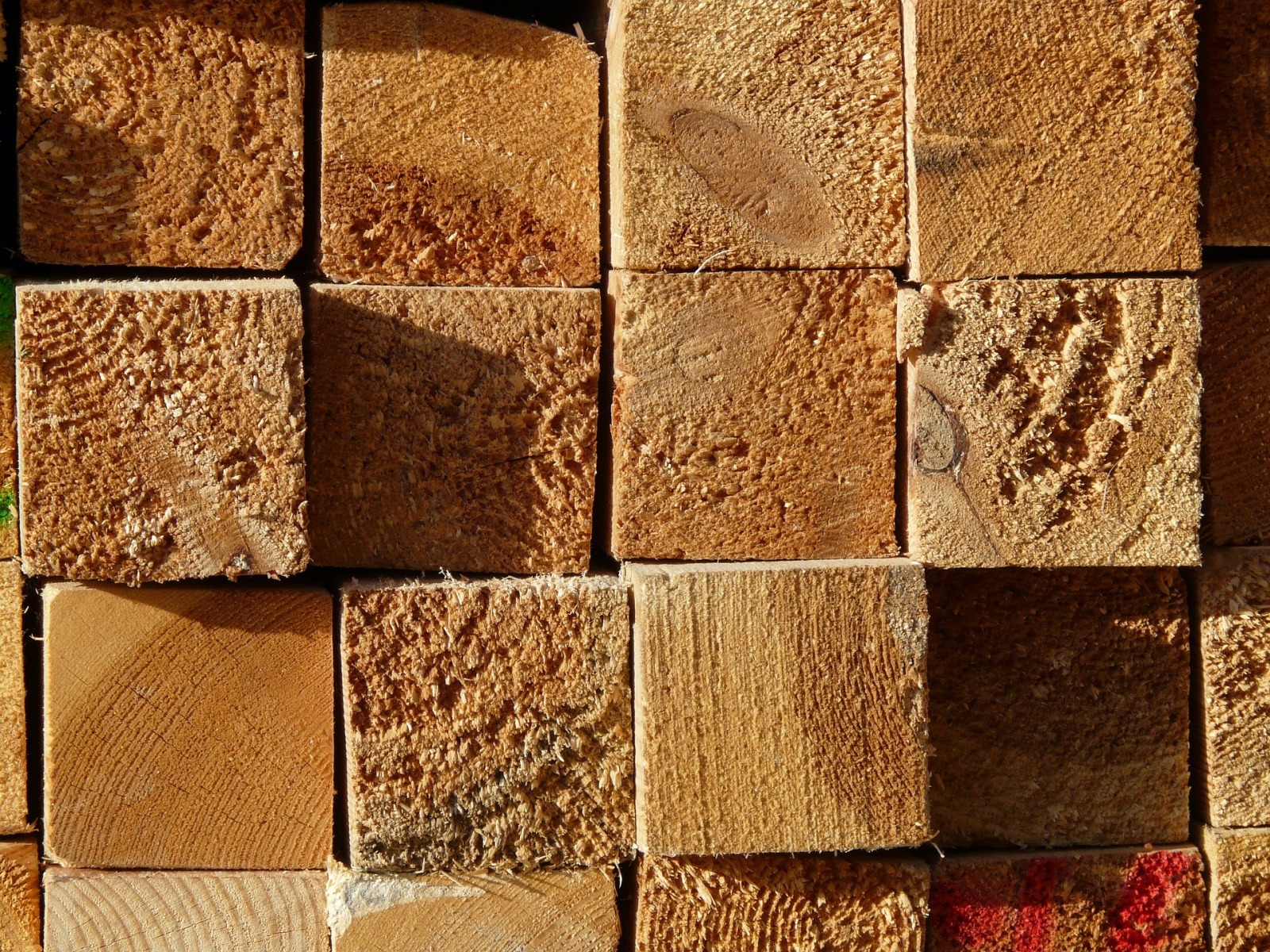 project using this innovative material.
project using this innovative material.
Ewen - This is a building project in Hackney in London. It's the Dalston Lane Development which is really a wonderful example of taking an old material wood and using it in a new way to build - they reckon to be one of the largest of its type, building construction projects certainly in the country. They're going to use more than 3,5000 cubic meters of wood, which is quite a lot actually, and the type of wood is, it's a sort of a laminated sort, a little bit like plywood. But rather than just lots and lots of thin layers, what you have here, you've strips of wood which are aligned at right angles to one another and all bonded together using an adhesive and a big press.
Chris - That gives you enormous strength, doesn't it? Because wood is strong in one direction but weak in another. So, by putting them at 90 degrees to each other, you're effectively sharing the benefits of both directions.
Ewen - Yeah, absolutely and you're also addressing things like the fact that wood, in its natural state, of course, starts to shrink in different ways and twist and bend. So, if you artificially bond it together, you can make flat boards stay flat for a long time.
Chris - So, you won't get a bent building.
Ewen - That's the hope.
Chris - When is the building going to be finished by?
Ewen - I think it's just started now. So, pretty soon I think, in a year or so time, but the key thing here is, why they're using this approach is that one, to tick a green box because obviously, using timber is a very green way of capturing carbon dioxide as opposed to using concrete which is, you need to produce a lot of carbon dioxide when you're making concrete. So, it's actually a really environmentally, unfriendly material as far as that's concerned. So, it's addressing that but it's all because wood is a darn sight lighter than concrete. This development is actually going all the way over a whole lot of holes under the ground, the tube cross rail, etc. so, they actually need lightweight buildings to actually be built in this. Otherwise, there may well be a little bit of a collapse of the buildings into the ground.
Chris - Will it last as long as concrete would?
Ewen - Well, probably longer actually if it's treated properly. I mean, concrete from my memory basically, which has a peak strength of about 20, 25 years, and then it actually starts to deteriorate over time especially if you've got steel reinforcing material in it which actually can start to rust and start to cause cracking. It doesn't happen with every concrete building, but it certainly can.

Do other mammals have blood types?
We asked Kat Arney to answer Sarah's question.
Kat - The very quick answer is yes. But I thought I'd unpack that a little bit and explain why. Blood groups are due to the molecules that are on the surface of your red blood cells.
In humans, we have two different sorts of molecules. The ones that for want of a better word, let's call them and A type and the B type, and then you've probably also heard of blood group O and that is basically neither A nor B. So, this gives us 4 possible human blood groups, A, AB, or O. In other animals, they don't exactly have the same molecules as us because these molecules enable us to recognise what's us - our self - versus what's foreign - not self. So other animals, they have a very similar system because it's all part of the immune system, how you check out, is this tissue belonging to me or not. So, apes because they're very closely related to humans, they have very similar blood markers. There are other types of markers in other species. So for example, dogs have about 13 different blood groups because they have a whole bunch of different molecules that are found on the surface of their blood cells. Cats - quite simple - they have about 3. So yes, other animals do have blood groups, not the same as ours, but fulfilling a similar function.
Chris - It didn't stop some people in history trying to put those blood samples into people though in the mistaken belief that this might be a good replacement for human blood.
Kat - I think there was lots of experiments with dogs. Dogs have done a lot of hard work in the circulatory research area. People putting dog blood into humans and vice versa and all sorts of things.

Why is spelling some words so hard?
We asked Naked Scientist Ginny Smith why we find certain spellings so hard to remember:
Ginny - Well, our brains remember things by trying to fit them in with stuff we already know. So, it's much, much easier to remember a fact that links to another fact that you already know. And this means that trivia can be quite easy to remember particularly if it's a piece of trivia of something you're interested in and something you already know a bit about. Spelling's are kind of arbitrary so they're a lot harder to remember. You just have to rote learn them. Some people find that really tricky. One way you can help yourself learn things like that is to try and relate it to something that you already know. So for example, if you're having trouble with one C and two S in 'necessary', you might want to remember that when you leave the house, you need one coat, but you need two shoes. Now because that's something you know, every time you go out, you put on one coat and you put on two shoes, hopefully, next time you go to spell the word 'necessary', you'll remember that it's necessary to have one coat and two shoes, and that will help. Can't help with the vowels though.
Chris - There's a number of words which are judged to be extremely hard to spell in English. Do you want to have a go.
Ginny - No, I'm awful at spelling.
Chris - Try this one - loquacious.
Ginny - Not a chance. I've been watching a programme about child geniuses where they have to do spelling out loud and they're incredible, some of them. People's brains just work in such different ways. I read ridiculously quickly and I think that's why I can't spell because I basically inhale whole sentences in one. I don't break it down letter by letter. That means that I'm really, really bad at spelling. That's my excuse at least.
Chris - Want to try loquacious, Ewen?
Ewen - Gosh, no. I'm going to pass on that as well.
Ginny - But spelling's only been invented fairly recently. If you read very old texts, people just made up how they fancied spelling a word. As long as it sort of sounded vaguely right and you knew what it was meant to be, it was fine. So, it's a recent invention.
Ewen - The things that do get my goat are the recent accepted changes in spellings or spellings where other countries spell them wrong for example, 'aluminium' as in our American cousins.
Chris - Careful with 'aluminium' because in fact, the correct way of spelling it is the way that it's spelled in America. It's 'aluminum'. It was actually Humphrey Davey who changed it to 'aluminium'
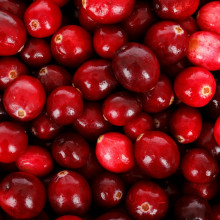
Can cranberry juice help urinary infections?
Louise - I've been diagnosed with a kidney infection, which has been caused a urinary infection, which is quite common in women. The one thing that I keep getting told is drink lots of cranberry juice to help prevent me from getting water infections in the future. I'm just wondering if there's anything scientific behind that or is it just an old wives' tale.
Chris - People have looked at this and there's some suggestion that what cranberry juice does is, it does get filtered into the urine, and it changes some of the molecules that are present on the surfaces of the urinary tract. When someone gets a urine infection, usually, it's E. coli - our old friend E. coli. It's a gut bug that crawls into the wrong place. And it does that by clinging on to the walls of your urinary tract by expressing what they ironically call, 'p pili'. These are effectively molecular grappling hooks that make the bacterium sticky. There's evidence that cranberry juice might be able to give you the anatomical equivalent of Teflon so that you become a bit slippery and the E. coli can't cling on. Now, the jury is out actually. People have done a number of studies on this. Some trials show that it is effective. Other trials show that it isn't effective. So, at the moment, I don't think people judge this to be adequate evidence base for us to say this will prevent you getting a UTI. What's certainly and arguably true though is, if you drink plenty and you pee plenty, you will therefore increase the odds of detaching the microbes from where they shouldn't be and flush them out. That means that you're less likely to have a urine infection in the first place. Getting dehydrated, especially on hot days, when you can get an overgrowth of the bugs because you're not washing them out as frequently, that's a big risk factor. So, I would urge you, if you are at risk of having UTIs, which can happen because it's very common, then drinking plenty regardless of what's in the drink you drink - within reason (!) - will probably help.

Will a foetus change the carrier's DNA?
We put the question to Kat Arney.
Kat - The simple answer is yes. The more complex answer is to look at why. Basically, there's a barrier between the mother's blood and the baby's blood which is the placenta, but stuff can kind of get across it and this is very interesting because there's evidence that bits of DNA from a foetus can get into the mother's blood. This is actually starting a very interesting area of testing maternal blood for the presence of for example, genetic defects in the foetus which could potentially be really useful because to look for things like down syndrome and things like that, you have to take a sample from the womb. That can have an increased risk of miscarriage. To be able to do these kind of blood tests, it could potentially be very useful. So yes, DNA from a foetus can get into the bloodstream of the mother. Potentially, also cells as well could be traveling around in the mother's bloodstream. Now, does it matter? Does it make a difference? Probably, not. The biggest risk to a mother from the foetus is probably from things like immune reactions and things like that from molecules produced by the foetus. They can be sort of blood group incompatibilities and things like that. But we do know for example that there are many, many, many successful IVF pregnancies that are done with donor eggs. This is women carrying babies that they have no relation to and they don't seem to have any ill effects on them or their children.
Chris - I think there's some suggestion that people who have been pregnant are much more prone to having autoimmune conditions where the immune system turns on itself or on the body itself. One suggestion is that this may be because there are cells from the baby lurking in those tissues from when the mother was pregnant. When the mother is pregnant there's a degree of immune "switch off" or immunosuppression to avoid the mother's immune system attacking what is 50 per cent genetically not her, because 50 per cent of the baby is obviously the dad's DNA. But once the pregnancy is over, then you've got this tissue there which is not the mother and then it turns on it in some cases and you get things like arthritis, thyroid disease, or maybe SLE - lupus.

How many elements in the Periodic Table?
Ewen Kellar answered Mark's question
Ewen - Right. I think there's something like 114 now I think. There's a number of synthetic elements which have incredibly transitory lives of trillionths of a second which are more sort of sparkles in a theorist's mind rather than in reality. But in various nuclear reactors and a Large Hadron Collider and similar instruments, they have succeeded in literally forcing the building blocks of atoms, nuclei where you've got protons and neutrons, and electrons together to form atoms which are ridiculously heavy. So they're at the far end of the periodic table, which will literally hold together for virtually no time at all before they fall apart because basically, they're just too unstable to hang on in there. But the number of stable elements will not have changed since you were doing your work. Though I do believe there are some theoreticians who think that there are some super heavy atoms which theoretically would be stable. But they just haven't managed to build them up yet to see whether they will work. But you never know in the future. They might exist.
Chris - These are so-called islands of stability, aren't they? The idea being that at the moment, these things don't hang around for very long but if we could make something of the right sort of size then it will hang around for long enough and it will act as a stepping stone that we can then use to get to even bigger elements which will have all kinds of exciting properties because we don't know what these things might behave like. We might be able to make exciting things out of them that would do exciting jobs that the elements we currently are endowed with on earth can't do.
Ewen - I do confess, I've just gone and checked online. It's actually 118 according to the periodic table now.
Chris - And I hope, with a slightly more imaginative name, unundecium, which number 112 had to live with for a little while until they came up with something a little bit better for it.
Ewen - Yeah. Well at least it's not unobtanium.
Chris - Which is kind of possibly where we are next! Mark, great question. Thank you very much.
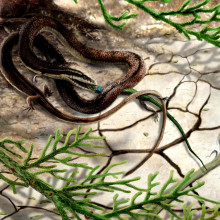
35:57 - The four-legged, hugging snake
The four-legged, hugging snake
A fossil snake unlike any other has been discovered - and it has 4 legs! This specimin may be able to settle some arguments about the evolution of snakes, as Ginny Smith 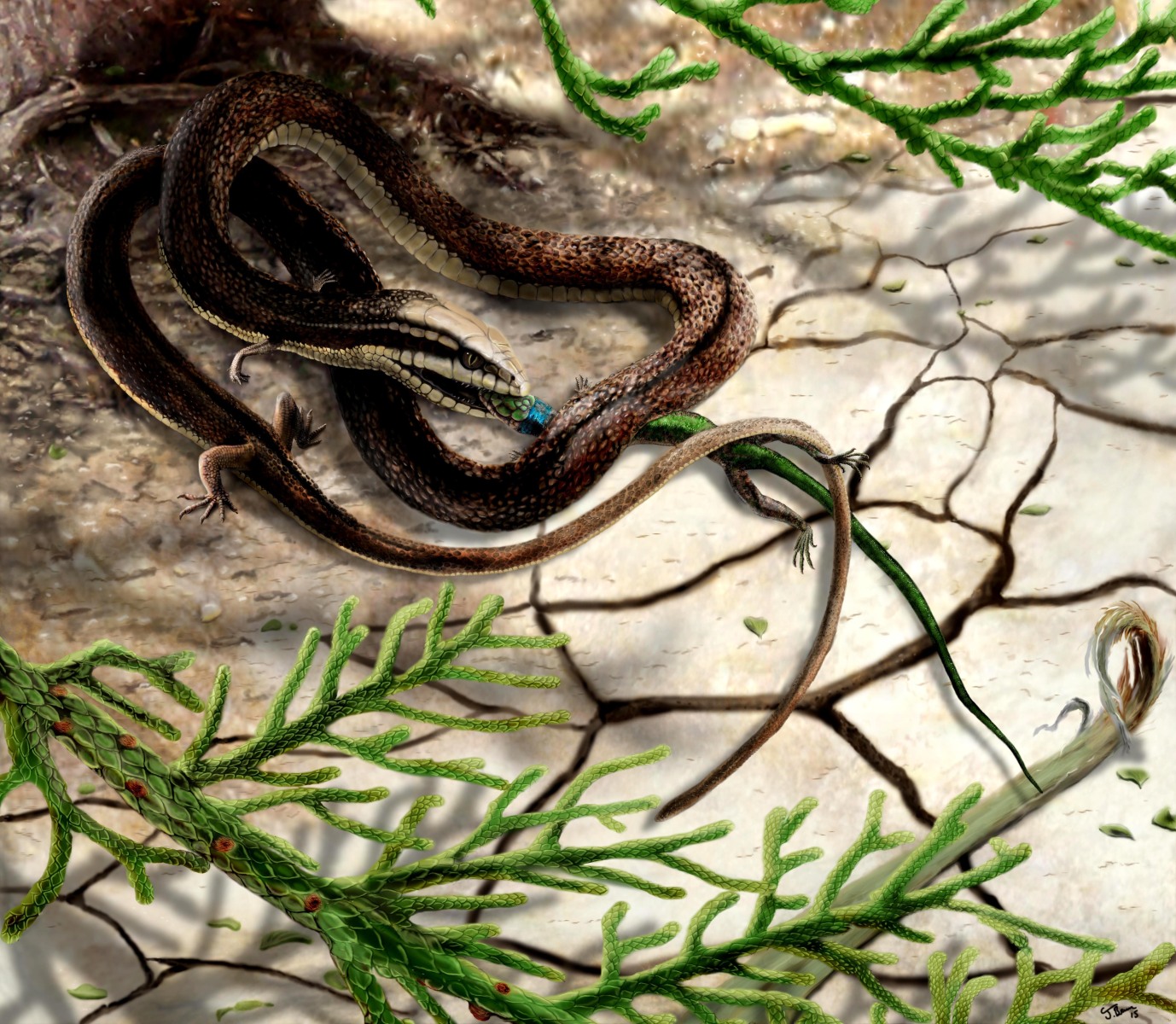 explains to Chris Smith...
explains to Chris Smith...
Ginny - I've got a really interesting story about an ancient fossil snake that's been discovered. Now, it hasn't been discovered the way that a lot of fossils are by someone out in the wilderness hunting for fossils. David Martill was actually on a field trip with his students to a museum and looking at the fossils in that museum in Germany and he spotted something really interesting. It looks exactly like a snake. It's very small. It's only about 15 centimetres long. But when he looked at it, he saw that it had legs. Now, that's interesting because snakes done normally have legs. There have been some examples found of snakes that have hind legs, just two at the back.
Chris - I think pythons have that don't they? A little pair of vestigial legs.
Ginny - Yes. They've got tiny little vestigial ones, but this one actually has four legs and a snake with four legs has never been seen before in the fossil record. So, he knew that they were on to something particularly interesting here. He's arguing that this definitely is a snake.
There is some debate here. So, we know that snakes evolved from lizards. So, they once had legs and then they lost them. They think it's a snake because it has scales like a snake and they even found in its stomach some little tiny bones which shows that it was eating other vertebrates. And of course, most snakes nowadays, I think possibly all snakes eat other animals. They are predatory. Not all experts are agreeing that this was a true snake because there are legless lizards - lizards that have lost their legs but aren't snakes. So there's still a little bit of debate here. But if it is a snake, which some people are saying it is, it would tell us something that we didn't know about how evolution happened because there's been a lot of argument about whether snakes evolved from lizards that swam or lizards that burrowed because in both of those examples, you can lose your legs and still get around perfectly well. This one supports the burrowing hypothesis.
This fossil doesn't have any adaptations that will make it a good swimmer, but it has a really kind of pointy noise that would've made it a good burrower. So, that shows support for that hypothesis. The other interesting thing is that their legs don't appear to be useful for walking or even sort of dragging yourself around and crawling. But they aren't completely useless. They aren't vestigial like the ones you mentioned on the living snakes that we see sometimes.
They have become kind of highly specialised and they think that they might actually have used it to hold on to their prey because they've got this really long fingers and possibly even hold on to each other when they were mating as well. But it does look like they've stopped being useful for one thing and they've evolved to be useful for something else which is really interesting. That's given rise to the snake's name which I think is great. It's called tetrapodophis amplectus which roughly translated means the four-legged hugging snake.
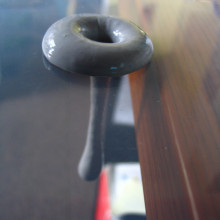
How much silly putty would cover the Earth?
We put this question to Ewen Keller.
Ewen - I really think this is one of these crazy questions that you can treat a number of different ways. Chris - Not with a pinch of salt though because that would stop the silly putty working. Ewen - Yeah, that's very true. But I thought I'd just give it a go and do some simple calculations in relation to sort of how much area is in the earth or around the earth, which a simple bit of maths, 4πr2 [four pi r squared] gives you the area which works roughly out to be 510 million square kilometres. Chris - That's the surface area of our whole planet. Ewen - Yeah. Though again, I kind of wonder from the source I looked up whether that actually includes all the humps and bumps, and going up to the Himalaya or not, which will obviously increase the area a bit more. But if we assume for simplicity's sake, it's 510 million square kilometres. The next question then is, how much silly putty do we want to cover the earth? Just for simplicity's sake, I decided to make it 1 centimetre deep. Basically, if you do the number crunching as far as I could get, you end up with needing a large piece of silly putty that's going to be 5.1 trillion tons in weight. So, that's 5.1 thousand billion tons in weight to use the terminology that we have for money matters that we hear so much about in the news. Chris - Does it float? Ewen - Well, I was going on the basis that it would have the same density as water. So, I decided to go for 1 gram per cubic centimetre again, for simplicity. Now, that amount of silly putty, if you were to actually make it into a cube would actually be a cube side of 17 kilometres in size. So, we're talking a pretty big lump of silly putty. Chris - Assuming you started at the top and plonked it on the north pole, and then let it sort of smear itself out, there would be a thermal effect as well because would the low temperature affect the material behaviour? Ewen - It probably would. It would slow it down quite a lot. Chris - What could we do to compensate? Would we have to heat it up? Ewen - Yeah. It is often quite a dark colour anyway. So, if it covers the north pole, then it will give you some increased global warming. So, that would probably speed things up a bit.
Chris - So it might be a self-fulfilling prophecy. It may speed things up and help it smear out more. Why does it have those weird properties? What's special about the material that is silly putty that makes it do that? Ewen - Basically, it's the way in which it links together at a molecular level. Basically, it's called a non-Newtonian fluid. So, it doesn't obey the laws of Newtonian physics. As a result of that, it has one or two peculiar properties that if you let it sit on its own, it will actually flow like you would imagine a normal liquid to be. But if you subject it to a rapid force, and this is because the molecules are sort of locked in a way that makes them resist force in a temporary manner. So, if you hit a piece of silly putty with a hammer for example, it will actually act as if it's a solid and you can actually break a bowl of silly putty up by almost fracturing it. And then if you let it sit for a while, it will then go back into blobs. So, it's a little bit like the guy in Terminator 2 when he gets frozen solid and basically, he got hit and got smashed into lots pieces but then became a liquid and became whole again. so, silly putty is a very interesting class of materials. Corn flour in water does exactly the same thing. Anyone who's been to the science festival in Cambridge will have enjoyed running over pots of corn flour, but you don't want to hang around for too long. Otherwise, you sink into it up to your knees.

Do yoga and meditation change the brain?
We put Kamil's question to Naked Scientist Ginny Smith.
Ginny - Well that's a really interesting question. Now meditation has been used for thousands of years but just recently people have started doing scientific research into it and
you're right, when you say everything we do changes the brain but the changes don't happen immediately with just one time of doing something. What you need is to do something repeatedly and by repeating it then you'll build up the changes in the brain. So what meditation does is you have to practice it, you have to do it repeatedly and you get better at it. And while you're doing that there are changes going on in the brain. So using EEG studies which look at the brainwaves you produce, there have been lots of studies on mindfulness meditation which link lower frequency waves with meditation. And that suggests that when you're in this meditative state you're more relaxed but actually when they look at the waves more carefully you've also got waves linked with attention and awareness. So you're sort of in this interesting relaxed but aware state which is something that a lot of other practices don't put you into. And when you look at the brains of people who meditate regularly compared to people who don't, you actually see changes in the structure of the brain.
Chris - So can I just ask you then Ginny just for clarity, is that there already and therefore people who are good at meditation already have that ability or is this something that comes along with people who become practiced at the art of meditation?
Ginny - So that's a difficult question to answer as a lot of studies, because it's cheaper and easier, will take a group of meditators and a group of non-meditators. There have been some intervention studies that have seen some of these changes over an 8 week course of meditation so that does suggest that there are structural changes going on. We also know that meditation can improve medical conditions - depression, anxiety a lot of these kind of things can be improved with meditation and that suggests there must be something going on in the brain.
Now there are regions that are consistently altered and they're regions that are involved in things like memories and being aware of your own body as well as attention regulation and tuning out distractions. Well you can see you need to do those things when you are meditating - you're tuning into your kind of inner consciousness and tuning out what's going on around you. And we know that the more you practice something, whether it's a musical instrument or a sport, the better you get at it so the suggestion is that meditation is practicing being aware of your emotions, dealing with them, tuning out distractions, that is going to change your brain as everything does and make you better at those things.
Chris - Good advice there Ginny and this is definitely something I do because when I'm doing boring repetitive tasks; gardening, mowing the grass that kind of thing, I often use this as a really good opportunity to sort of mentally rehearse things I want to try and remember or run through facts that I want to get to the bottom of. And it's a really good have that almost isolation from everything else as you're doing something boring and repetitive and you can put yourself in a cognitive bubble and concentrate on doing something completely different.
Ginny - The way memory works is the more times you recall a memory the stronger the trace of that memory is in your brain and the more likely you are to remember it in the future so I think that's a very good idea.
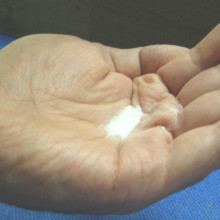
What does salt do to Silly Putty?
Ewen Kellar tackled this question from Ed Wilson...
Ewen - OK well you're quite right, and we're not claiming that the Silly Putty would roll up the hills and certainly any bump, or tree or a plant or a building is going to act as a bit of a barrier and stop the Silly Putty enveloping it. But I think close to where our 17 kilometre square cube does touch the earth, I think it will probably envelop most things at that point. So I think, yes, gravity will take its toll but I think initially we will get a complete deluging of this crazy liquid.
Chris - And the salt or sugar?
Ewen - Probably the easiest way I can describe this is by giving you an idea of why the Silly Putty works or similar types of materials work. So basically these types of fluids, these non-newtonian fluids work in a way that the molecules interact with one another. These long chains of essentially polymer type molecules which, sort of, partially lock together. This is a phenomenon called Hydrogen bonding where you have an interaction between Hydrogen and Oxygen groups on one molecule which lock on to the opposite Hydrogen and Oxygen on another molecule- essentially makes them sticky, makes them start to lock together. And if they're made to stop in a dynamic way, say if you hit this liquid with a force, with a hammer, you will cause it to react like a solid and that will give this weird phenomenon of cracking on the surface. If you add something like salt to the material, the salt dissolves into the Silly Putty and actually stops this sort of interaction happening.
Now I can give a real example of my discovery of non-Newtonian fluids when I was probably about 8 or 9 years old and that was when I was trying to make custard on my own. So we are talking about the old style custard powder, not the stuff which is all mixed up. So here you took your custard powder , you put it in a bowl and you were supposed to mix in an amount of sugar and milk all in one go. But what I did was I mixed the milk in first and what I discovered was this non-Newtonian fluid behaviour. Because essentially custard powder is just cornflour which is essentially starch with some egg powder in it. But when you add the sugar into this amazing liquid it stops being an amazing liquid and just becomes a boring one. So here we have exactly the same scenario where the sugar is dissolving in the milk, which in turn is then disrupting this phenomenon and stopping the Silly Putty or custard to work.
Chris - So it becomes Un-Silly Putty , Ewen thanks very much.
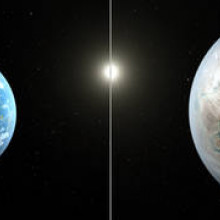
Is there a habitable zone for gravity?
Chris Smith answered Stephen's question...
Chris - Well, the thing to think about, Simon, is that obviously just because something is bigger than the Earth, it doesn't mean its gravity is going to be the same amount bigger than the Earth because it depends what it's made of.
Jupiter is some 318 times more massive than the Earth is, but it doesn't mean that you would weigh 318 times more on the surface of Jupiter because the radius of Jupiter is about 60000 kilometres compared with Earth's 6000. And because gravity actually works through a centre of mass, and is proportional to the square of the size of something, then actually you are talking about a mass on the surface of Jupiter actually weighing about 3 times more there than it would on the Earth.
So you can't assume just because something's bigger that the gravity is going to be that much different at the surface because it would depend what the object is made of and how much its mass is.
But one thing to bear in mind here is, regardless of what gravity might do to the atmosphere of the surface of a planet, water, as Ginny was saying earlier, means that things can live under enormous pressures.
There are things living 10 kilometres down in the oceans quite happily because they've adapted to do so. And we think water is essential for life anyway so even if you did have a very very big planet with very very powerful gravity, which would mean that you as a human would weigh a huge amount on the surface of the Earth, and incidentally NASA thinks that if we experience gravity of about 4 times what we've got on Earth that would probably render a human inviable so we just couldn't exist in that environment, but if you were a water dweller you would probably have no problem at all, like those fish at the bottom of the ocean.
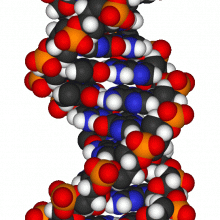
What's the best source of human DNA?
Kat Arney got stuck in to this question.
Kat - To be honest, when scientists are doing things like genetic studies, the best source of DNA is actually the blood. Red blood cells don't have DNA in because they lose it as they mature, but white blood cells are packed full of it. So, a good sample of blood, you spin it down, you take out the white blood cells, nice and pure, get a good sample of DNA. But actually, Paul is a man and he has a great source of DNA in his trousers. Without getting too graphic about it, sperm is actually really fantastic source of lots of DNA.





Comments
Add a comment